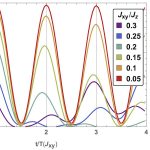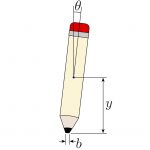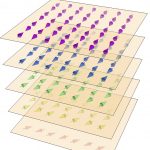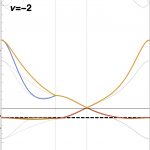The month november was quite successful publication-wise, as four of my publications have been accepted.
 Quenching the Kitaev honeycomb model
Quenching the Kitaev honeycomb model
Starting from an antiferromagnet, let it evolve with Kitaev’s spin liquid honeycomb model. I developed the technique to study what happens next, a combination of Majorana Loschmidt echo’s and gauge field Monte Carlo. A prethermal regime appears, characterized by magnetization oscillations that can be described by the toric code. Accepted by SciPost.
 An Introduction to Spontaneous Symmetry Breaking
An Introduction to Spontaneous Symmetry Breaking
Together with Aron Beekman and Jasper van Wezel, I wrote a lecture notes on the basics of spontaneous symmetry breaking. Aimed at graduate students, it is a modern overview containing both the classics (Mermin-Wagner theorem, Nambu-Goldstone modes) as well as modern notions (tower of states, type A/B symmetry breaking, topology). Accepted by SciPost Lecture Notes.
 Exact ground state of the Lieb-Mattis Hamiltonian as a superposition of Néel states
Exact ground state of the Lieb-Mattis Hamiltonian as a superposition of Néel states
The Lieb-Mattis Hamiltonian was originally used to show that the ground state of the Heisenberg antiferromagnet is a symmetric singlet state. How then, one might wonder, does the symmetry broken antiferromagnetic state arise? Well, read my published work in Physical Review Research.
 Charge smoothening and band flattening due to Hartree corrections in twisted bilayer graphene
Charge smoothening and band flattening due to Hartree corrections in twisted bilayer graphene
Together with Paula Mellado I calculated the Hartree corrections in twisted bilayer graphene when doping away from charge neutrality. Surprisingly, the charge transfer we observe between AB/BA and AA regions of the Moiré unit cell makes the flat bands even flatter. Published in Physical Review B.
